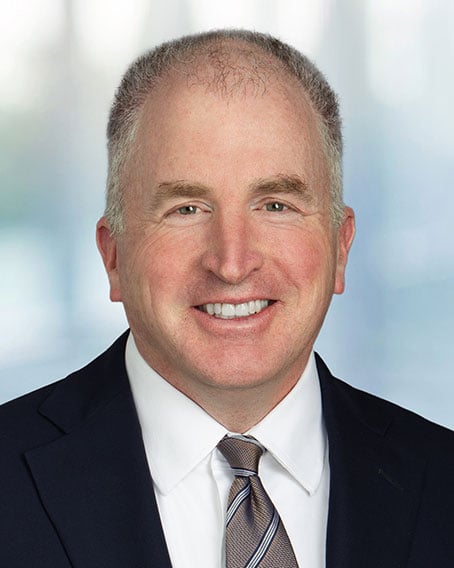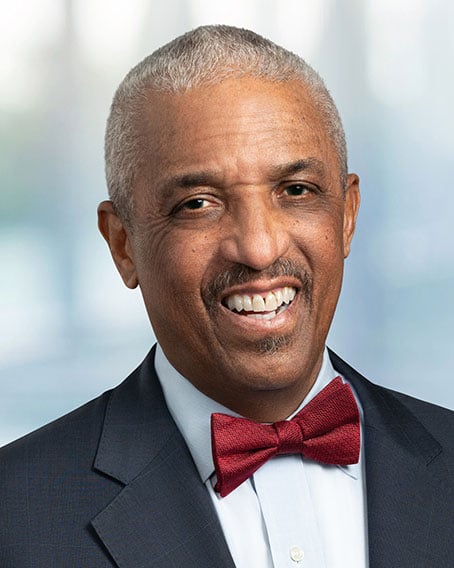Following the NCAA’s interim name, image, and likeness (“NIL”) policy in July,1 student-athletes for the first time had the opportunity to profit from their NIL rights. Throughout this inaugural season, there were some wins (lucrative endorsement deals), some disappointments (discrepancies in NIL earnings across sports and conferences), a lot of work (schools scrambled to get their own NIL policies in place), and, above all, confusion.
The NCAA interim policy removed the restriction on student-athletes receiving compensation for NIL but did not enact uniform NIL policies or rules (other than to maintain existing restrictions on recruiting inducements and pay-for-play). Thus, with no federal legislation in place, no specific NCAA NIL rules, and no precedent (yet) on NCAA enforcement under the interim policy, NIL activities and restrictions vary from state to state and school to school.
The NCAA in January voted to enact a new constitution, which notably did not include any substantive changes to the interim NIL policy.2 Nevertheless, as collegiate institutions and student-athletes continue to await further word from the NCAA, there have been some notable developments. This alert analyzes student-athlete NIL state and federal legislative updates, litigation, trends from the first semester, and NIL policy best practices.
State Legislative Updates
Prior to the interim NCAA policy, certain states enacted laws that would override the NCAA’s prior restriction on compensation for NIL to provide more opportunities to student-athletes. Ironically, following the adoption of the interim policy in July, those states with no NIL laws have turned out generally to be more permissive (and thus more attractive) for enterprising student-athletes.
To date, twenty-eight states have adopted student-athlete NIL laws, including Kentucky, North Carolina, and Ohio, which currently are governed by executive order. Eleven more states have proposed or pending legislation. Alabama, which had a somewhat more restrictive NIL law than comparable states with robust collegiate athletic programs, repealed its NIL statute in early February in order to harmonize with the more open-ended NCAA policy, and to allow each institution within the state to enact its own NIL policy.3 Florida has introduced amendments to its current NIL legislation to provide more freedom to student-athletes, while allowing college and university athletics staff to be actively involved in crafting and negotiating agreements.
Differences among these many state laws have resulted in disparities among regions, divisions, and conferences, and arguably have provided recruiting advantages to schools with more lenient NIL policies. New Mexico’s law,4 for example, imposes relatively few restrictions on student-athlete NIL licensing, while Alabama’s recently repealed law (i) prohibited student-athletes from exploiting their NIL in connection with certain activities, including alcohol, tobacco, and gambling; (ii) prohibited booster organizations from compensating student-athletes for NIL; and (iii) gave the student-athlete’s institution the right to force the rejection of an endorsement contract if the school concluded that there was a conflict with its own sponsorship deals.5
As some states with more restrictive NIL laws consider repealing or amending them to take advantage of the NCAA’s more permissive interim policy, the NCAA continues to hold out hope that national legislation will override the current patchwork of state laws.
Federal Legislative Updates
In contrast to state legislatures, there has been little movement at the federal level since July 2021. In September, the House Subcommittee on Consumer Protection and Commerce held a hearing on NIL where many prominent stakeholder groups provided testimony.6 However, the Subcommittee has not introduced any new legislation, and all seven previously introduced bills have stalled in committee. Some school athletic directors have publicly pushed the NCAA to take a more active role in lobbying the federal government.7 However, the NCAA appears to remain hesitant to move forward on creating its own national policy, possibly due to antitrust concerns stemming from the May 2021 Supreme Court decision in NCAA v. Alston.8 Thus, federal legislation may be the only path for resolving the current confusion and competitive imbalance among states.9
Although federal legislation could bring welcome uniformity and predictability to NIL rules, it also could raise a host of new issues. For example, federal NIL legislation could open the door to broader government oversight over collegiate sports, or to granting student-athletes the right to unionize.10 There are also concerns that federal intervention could lead to closer scrutiny, and potential loss of, non-profit status for some institutions.11
Litigation Updates
In the current environment of uncertainty and confusion, the number of lawsuits relating to NIL is likely to increase. The most notable current action is In re College Athlete NIL Litigation.12 This California class action suit seeks to strike down NCAA rules prohibiting student-athletes from being paid for their NIL, including restrictions on pay-for-play and recruiting inducement (both of which are prohibited under the NCAA’s current interim policy). The plaintiffs argue that even though the NCAA policy was enacted on an interim basis, it is ineffective in serving both student-athletes and institutions.13 The suit also seeks damages for NIL deals student-athletes were prohibited from entering over the last four years.
A group of high school students filed suit in Florida state court in early January, claiming that the rules set for their sports have violated state antitrust law by restricting them from licensing their NIL.14 As of January 2022, only the governing organizations in California, New York, Alaska, Nebraska, and New Jersey permit high school athletes to profit off of their NIL, but more state athletic associations are beginning to amend their policies.
Trends from the First Semester
While schools scramble to implement NIL policies and understand their relevant state laws, this past semester a number of student-athletes have taken advantage of the opportunity to profit from their NIL. For example, University of Connecticut Women’s Basketball star Paige Bueckers became the first college athlete to strike a deal with Gatorade,15 and also signed a multi-year deal with e-commerce platform StockX.16 Gatorade also reached a sponsorship agreement with Shedeur Sanders, the Jackson State University quarterback, making him college football’s first student-athlete to sign a deal with the company. Sanders has also reportedly inked deals with Beats by Dre and Tom Brady’s new apparel line.17
But despite these headline deals, the current data shows that most student-athletes are making much less. Opendorse, an athlete marketing and NIL platform, reported that through December 31, 2021, deals that passed through its platform earned an average (not median) of $1,036 since July 1, 2021.18 Similarly, INFLCR, another marketing and NIL platform, reported an average of $1,306 but a median of just $51.19 In terms of total compensation, Opendorse reported that football players accounted for 64% of NIL compensation, followed by men’s basketball and then women’s volleyball. According to Opendorse, most of the NIL endorsement money is going to student-athletes in the biggest conferences, with the Big Ten, Big 12, ACC, and SEC leading the way.
Many of these NIL deals are coming from school boosters rather than established companies and brands. While such payments would have been impermissible prior to the NCAA’s interim policy, a number of states now allow such deals. A current trend is the formation of booster “collectives”—businesses that facilitate and provide NIL opportunities to student-athletes.
Activities of collectives and other booster activities may create a risk of concerns about crossing the line into pay-for-play, which still is prohibited, and may also raise Title IX concerns (e.g., concerns that male student-athletes effectively have more scholarships than their female counterparts). The NCAA has reportedly inquired about NIL deals at Brigham Young University, the University of Oregon, and the University of Miami.20 It remains unclear just how aggressively the NCAA will enforce NIL in the context of pay-for-play or recruiting inducement violations, and where lines will be drawn. Similarly, schools and individual states face difficult questions (and PR implications) as to whether and (if so) how hard to enforce new laws and policies against individual student-athletes.
While prohibited in some states (including Florida and formerly Alabama), some schools have begun to take matters into their own hands and are facilitating NIL deals for their student-athletes. For example, the University of North Carolina (“UNC”), launched a group licensing program shortly after the NCAA’s interim policy went into effect, which licenses both school trademarks and logos and student-athletes’ NIL to third parties.21 Less than two months after announcing the program, UNC signed a group licensing arrangement with The Brandr Group, which included deals with more than ten companies, including Nike and Hanes. In mid-January of this year, Ohio State University followed UNC’s lead and launched its own NIL advisory group to help student-athletes connect to NIL opportunities.22
The differences among state and school NIL policies, coupled with the new “one-time transfer rule” allowing student-athletes to transfer one time without being required to sit out for a year, have many coaches and school administrators concerned about the recruiting advantages NIL may create.23 Indeed, many student-athletes appear to be following the money – i.e., looking to land at schools where they can maximize their endorsement deal potential. Where there were clear lines prohibiting student-athletes receiving any compensation to attend a school, those lines are now less clear due to the permissible stream of money flowing from NIL.24
Surviving in the Wild West
Although federal legislation on NIL is likely the best hope for creating a framework that has consistency and transparency for all stakeholders, there are various issues that schools, coaches, and sponsors should keep in mind until such legislation is in place.
No Pay-for-Play
While the lines around what will and won’t be enforced under the NCAA’s interim policy remain unsettled, at a minimum, legitimate NIL deals should (i) require quid pro quo (e.g., payments in exchange for the student-athlete’s autograph signings, personal appearances, social media posts, etc.); (ii) ensure payments and incentives are not tied to individual or team performance (e.g., no bonus for winning a championship or scoring a certain number of points); and (iii) involve payments commensurate with the fair market value of the services the student-athlete actually provides. Although fair market value for personal services can vary greatly depending on the endorser’s popularity, NIL deals cannot be used as a shell to disguise otherwise illegal payments to student-athletes. If a school’s compliance program identifies a student-athlete’s NIL deal that appears on its face to be a clear violation of one of the foregoing principles, further investigation (and documentation showing such investigation occurred) would be warranted.
Tread Cautiously if School Is Directly Involved
Some state NIL laws prohibit schools from facilitating NIL deals for their student-athletes. Even in states that don’t have such restrictions, any deal in which a coach or other school representative is directly involved is likely to be subject to further scrutiny as a potential violation of current NCAA policy. Schools that facilitate NIL deals should, to the extent permitted by state law, designate specific personnel to assist with such activities. For example, Ohio State University’s new advisory group designates certain operations directors across its varsity sports to focus on NIL issues and educate potential sponsors about the school’s NIL policies.25 As a general rule of thumb, the greater the level of institutional involvement in the NIL activity, the greater the likelihood such activity could be considered pay-for-play or improper inducement.
Clarity on Use of School’s Intellectual Property
As schools continue to develop and amend their own NIL policies, they should clarify (consistent with applicable state law) their position on potential conflicts concerning the school’s own intellectual property and its own licensing and sponsorship deals. For example, some schools allow student-athletes to use school trademarks and logos in their individual NIL deals (e.g., sponsored social media posts depicting the student-athlete in the school uniform), while others prohibit such use. Certain state laws permit schools to reject individual student-athlete endorsement deals to the extent they conflict with schoolwide or teamwide sponsorship deals.26 Sponsors signing student-athlete endorsement deals should consider whether they need separate agreements with schools in order to avoid intellectual property infringement or “ambush marketing” claims.
Allow Flexibility
Because NCAA policy, state laws, litigation, and enforcement precedents are all in a state of flux, it is important for schools, student-athletes, and sponsors to maintain flexibility to adapt as circumstances change. For example, NIL deals should include a mechanism for amendment in the event that applicable laws or policies change, so that the student-athlete is not required to violate those laws or policies but the sponsor still receives a reasonable substitute for the rights that were paid for. Further, school NIL policies and compliance protocols should continue to be revisited, refined, and updated as they accumulate more real-life experience operating in a world of NIL compensation.
What Lies Ahead
Although lucrative (for some) and confusing and frustrating (for many), the first semester following the NCAA’s interim policy also gave rise to a number of creative solutions and initiatives from multiple stakeholders. There is clearly great interest in this topic from both a regulatory and marketing standpoint, and there are many groups working to effect changes. No doubt Spring 2022 will bring its share of surprises, challenges, and – hopefully – further clarity as schools, students-athletes, and businesses adapt to the new NIL paradigm.
- NCAA NIL Interim Policy: A Win for Student-Athletes, but Challenges Remain Ahead, Ropes & Gray LLP (July 2, 2021), https://www.ropesgray.com/en/newsroom/alerts/2021/July/NCAA-NIL-Interim-Policy-A-Win-for-Student-Athletes-but-Challenges-Remain-Ahead?utm_source=alert&utm_medium=email&utm_campaign=NCAA-NIL-Interim-Policy-A-Win-for-Student-Athletes-but-Challenges-Remain-Ahead.
- Corbin McGuire, NCAA members approve new constitution, NCAA (Jan. 20, 2022), https://www.ncaa.org/news/2022/1/20/media-center-ncaa-members-approve-new-constitution.aspx.
- Brian Lyman, Alabama House approve repeal of state’s NIL law for student-athletes, Montgomery Advertiser(Jan. 19, 2022), https://www.montgomeryadvertiser.com/story/news/2022/01/19/alabama-house-approves-repeal-states-nil-law-student-athletes/6561111001/. See also H.B. 76, 2022 Leg., Reg. Sess. (Ala. 2022) (enacted).
- S.B. 94, 55th Leg., Reg. Sess. (N.M. 2021) (enacted).
- H.B. 404, 2021 Leg., Reg. Sess. (Ala. 2021) (repealed).
- Maria Carrasco, Congress Weighs In on College Athletes Leveraging Their Brand, Inside Higher Ed (Oct. 1, 2021), https://www.insidehighered.com/news/2021/10/01/congress-holds-hearing-creating-federal-nil-law.
- Eric Kolenich, Name, image, likeness law for college athletes is taking shape in Virginia Senate, Fredericksburg.com (Jan. 25, 2022), https://fredericksburg.com/news/state-and-regional/name-image-likeness-law-for-college-athletes-is-taking-shape-in-virginia-senate/article_87dfbe74-75b1-52fc-8817-b51d6560b479.html.
- NCAA v. Alston, 141 S. Ct. 2141 (2021).
- Chris Low, Nick Saban, Kirby Smart both call for increased NIL regulation in college football: 'You're going to have the haves and have nots', ESPN (Jan. 9, 2022), https://www.espn.com/college-football/story/_/id/33027223/nick-saban-kirby-smart-call-increased-nil-regulation-college-football-going-haves-nots.
- Zachary Zagger, NCAA Members Vote To Adopt New Streamlined Constitution, Law360 (Jan. 20, 2022), https://www.law360.com/articles/1456911/ncaa-members-vote-to-adopt-new-streamlined-constitution.
- Dennis Dodd, With the NCAA backed into a corner, the age of paying college athletes is officially upon us, CBS (Jan. 20, 2022), https://www.cbssports.com/college-football/news/with-the-ncaa-backed-into-a-corner-the-age-of-paying-college-athletes-is-officially-upon-us/.
- In Re College Athlete Nil Litigation, US District Court Docket 4:20cv3919 (D.N. Cal.).
- Zachary Zagger, NCAA Athletes Say Name, Image 'Experiment' Proves Case, Law360 (July 27, 2021), https://www.law360.com/articles/1407164/ncaa-athletes-say-name-image-experiment-proves-case.
- Nathan Hale, Fla. Student-Athletes Challenge Bar On Pay For Their Images, Law360 (Jan. 13, 2022), https://www.law360.com/articles/1455291/fla-student-athletes-challenge-bar-on-pay-for-their-images.
- Kim Bhasin, Gatorade Signs Paige Bueckers as First College Athlete Endorser, Bloomberg (Nov. 29, 2021), https://www.bloombergquint.com/onweb/gatorade-signs-basketball-star-bueckers-after-ncaa-endorsements-rule-change.
- Kristi Dosh, Paige Bueckers Signs First Major NIL Brand Deal With StockX, Forbes (Nov. 10, 2021), https://www.forbes.com/sites/kristidosh/2021/11/10/paige-bueckers-signs-first-major-nil-brand-deal-with-stockx/?sh=1a3f03d22a73.
- Tom Vanhaaren, Jackson State’s Shedeur Sanders is first college football player to sign NIL deal with Gatorade, The Undefeated (Jan. 27, 2022), https://theundefeated.com/features/jackson-states-shedeur-sanders-signs-nil-deal-with-gatorade/.
- NIL Industry Insights, Opendorse (Dec. 31, 2021), https://opendorse.com/nil-insights/.
- Alan Blinder, The Smaller, Everyday Deals for College Athletes Under New Rules, New York Times (Dec. 9, 2021), https://www.nytimes.com/2021/12/09/sports/ncaafootball/college-athletes-nil-deals.html.
- Ralph D. Russo, Lack of detailed NIL rules challenges NCAA enforcement, ABC News/Associated Press (Jan. 28, 2022), https://abcnews.go.com/Sports/wireStory/lack-detailed-nil-rules-challenges-ncaa-enforcement-82542420.
- Zachary Zagger, UNC Launches First College Athlete Group Licensing Program, Law360 (July 20, 2021), https://www.law360.com/articles/1404779/unc-launches-first-college-athlete-group-licensing-program.
- Griffin Strom, OHIO STATE UPDATES NIL GUIDELINES, CREATES NIL EDGE TEAM TO COORDINATE OPPORTUNITIES FOR STUDENT-ATHLETES, Eleven Warriors (Jan. 24, 2022), https://www.elevenwarriors.com/ohio-state-football/2022/01/128917/ohio-state-updates-nil-guidelines-creates-nil-edge-team-to-coordinate-opportunities-for-student-athletes.
- Dennis Dodd, Coaches worry tampering, inducements, 24/7 free agency have turned transfer portal into Wild West, CBS (Feb. 1, 2022). https://www.cbssports.com/college-football/news/coaches-worry-tampering-inducements-247-free-agency-have-turned-transfer-portal-into-wild-west/.
- Sean Keeler, Transfer portal, NIL legislation creating “chaos” in college football, CU Buffs AD Rick George says, Denver Post (Jan. 6, 2022), https://www.denverpost.com/2022/01/06/brenden-rice-rick-george-cu-buffs-transfer-portal-nil-ncaa/.
- Griffin Strom, OHIO STATE UPDATES NIL GUIDELINES, CREATES NIL EDGE TEAM TO COORDINATE OPPORTUNITIES FOR STUDENT-ATHLETES, Eleven Warriors (Jan. 24, 2022), https://www.elevenwarriors.com/ohio-state-football/2022/01/128917/ohio-state-updates-nil-guidelines-creates-nil-edge-team-to-coordinate-opportunities-for-student-athletes.
- Dan Whateley, How college athletes are getting paid from brand sponsorships as NIL marketing takes off, Insider (Dec. 30, 2021), https://www.businessinsider.com/how-college-athletes-are-getting-paid-from-nil-endorsement-deals-2021-12.
Stay Up To Date with Ropes & Gray
Ropes & Gray attorneys provide timely analysis on legal developments, court decisions and changes in legislation and regulations.
Stay in the loop with all things Ropes & Gray, and find out more about our people, culture, initiatives and everything that’s happening.
We regularly notify our clients and contacts of significant legal developments, news, webinars and teleconferences that affect their industries.





